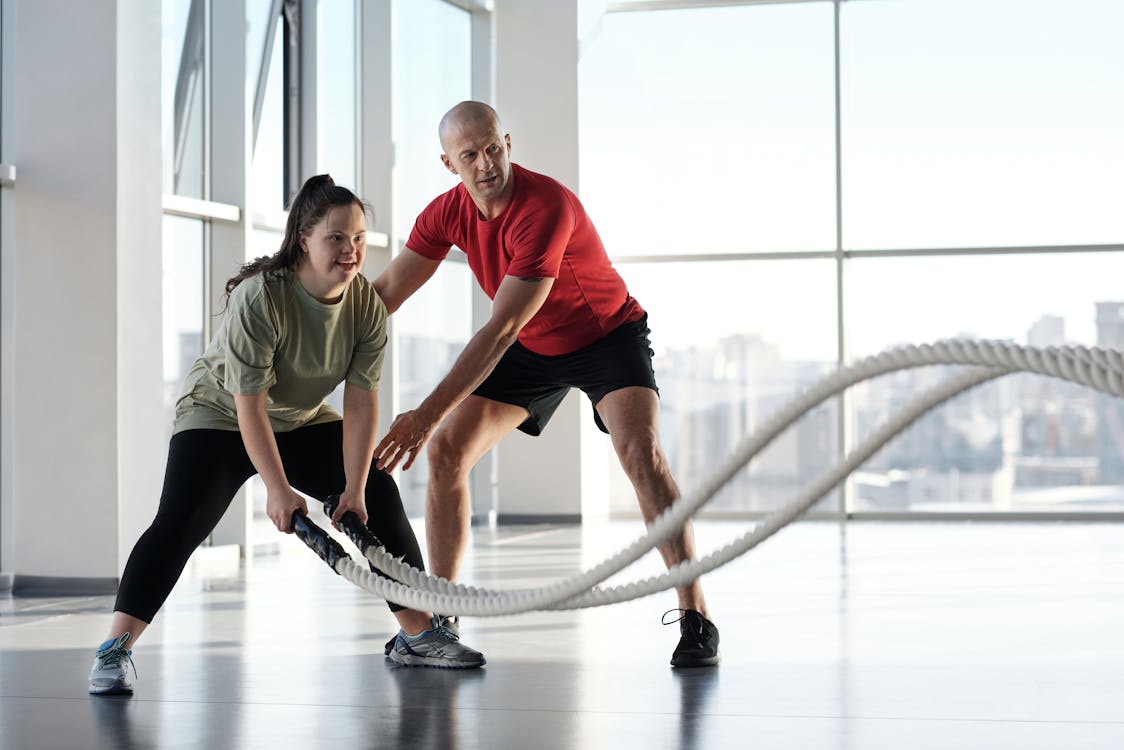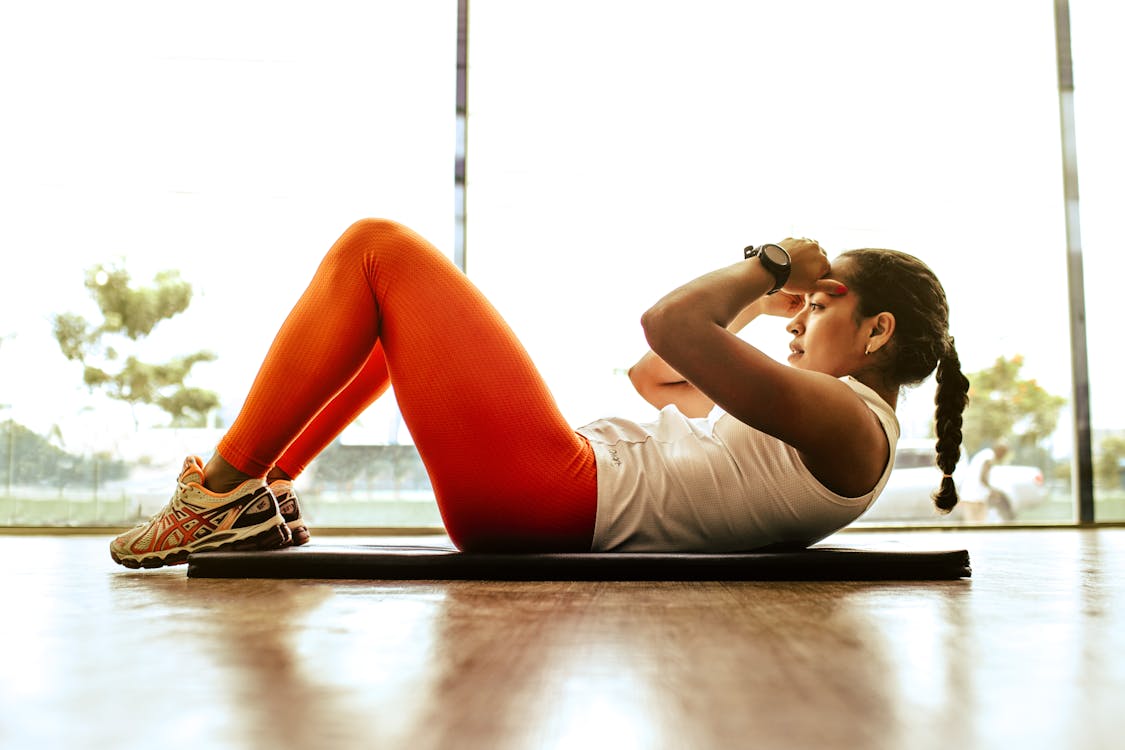Are you tired of that nagging neck crick, the persistent lower back ache, or those grumpy knees that protest with every step? If you're nodding along, you're far from alone. In our modern, often sedentary lives, aches and pains have become unwelcome companions for many. But what if the secret to unlocking full-body pain relief wasn't about chasing symptoms, but about addressing the root cause in just a few key areas?
This comprehensive guide, inspired by an incredibly insightful video on mobility and stability, reveals that discomfort often stems from interconnected weaknesses and mobility restrictions far from where you actually feel the pain. Forget trying to tackle every ache individually! We're diving into a targeted, efficient **three-step prehab routine** focusing on your scapula (shoulder blades), hips, and ankles – critical hubs that influence your entire body's function. Get ready to learn how just **11 minutes** can pave the way to improved mobility, reduced pain, and enhanced overall movement.

Unlock your body's potential for pain-free movement by targeting key mobility hubs.
Let's explore how to release, lengthen, and activate your way to a more comfortable and capable body!
Table of Contents
- The Pain Puzzle: Why Your Aches Aren't Always What They Seem
- The 3-Step Prehab Powerhouse: Foam Roll, Stretch, Activate!
- Area 1: Unlocking Your Shoulders – Scapular Mobility & Stability
- Prehab 1.1: Levator Scapulae Foam Rolling
- Prehab 1.2: Suspension Trainer Snow Angels Stretch
- Prehab 1.3: Serratus Anterior Activation (Press)
- Area 2: Freeing Your Hips – Hip Mobility & Stability
- Prehab 2.1: Rectus Femoris Foam Rolling
- Prehab 2.2: Side Lunge Crescent Stretch
- Prehab 2.3: Side Shift Skaters (Glute Activation)
- Area 3: Grounding Your Movement – Ankle Mobility & Stability
- Prehab 3.1: Peroneal Foam Rolling
- Prehab 3.2: Bare Squat to Foot Stretch
- Prehab 3.3: Plate Weight Eccentric Calf Raises
- Your 11-Minute Path to Full-Body Relief: Routine & Consistency
- Your Mobility & Pain Relief Questions Answered
- Mobility as a Cornerstone of Holistic Wellness
The Pain Puzzle: Why Your Aches Aren't Always What They Seem
It's a common frustration: your neck hurts, so you stretch your neck, but the relief is temporary. The video highlights a crucial concept: **pain often indicates a secondary problem, not the root cause.** Our bodies are interconnected kinetic chains. Sedentary habits and old injuries cause some muscles to become tight and others weak. This leads to compensations where certain parts of your body take on more load than they're designed for, eventually leading to pain and restricted movement.
Instead of chasing individual symptoms, this approach focuses on three critical areas—scapula, hips, and ankles—whose improved function can have a ripple effect, relieving pain throughout the body.
Key Insight: True mobility involves not just muscle flexibility but also joint stability, achieved by activating underused muscles to properly support the joints.
The 3-Step Prehab Powerhouse: Foam Roll, Stretch, Activate!
The core of this pain-relief strategy is a simple yet powerful three-step prehab approach for each target area:
- Foam Rolling (or Ball Rolling): This self-myofascial release technique helps to relax and release trigger points in tight muscles, improving tissue quality and preparing them for stretching.
- Stretching: Once muscles are more pliable, targeted stretches increase their length and improve the range of motion at the associated joints.
- Activation: This crucial step involves strengthening often underused or weak muscles that are essential for stabilizing the joint and maintaining newfound mobility. This ensures the joint is supported correctly, preventing a return to old, painful patterns.
Area 1: Unlocking Your Shoulders – Scapular Mobility & Stability
Aches in your elbow, neck, shoulder, or upper back? Poor scapular (shoulder blade) control is often the culprit. Your scapulae are the foundation for shoulder movement and stability.
Prehab 1.1: Levator Scapulae Foam Rolling (or Ball)
This muscle, at the top/inner edge of your shoulder blade, often gets tight, contributing to neck and shoulder pain. Lie on your back and use a massage ball or the edge of a foam roller to apply pressure to this area, breathing deeply to relax.
Prehab 1.2: Suspension Trainer Snow Angels Stretch (or floor/wall variation)
This opens the chest and mobilizes the shoulders and scapulae, focusing on actively engaging upper back muscles. It helps correct forward-tipped scapulae caused by tight pecs. If you don't have a suspension trainer, floor or wall angels can provide similar benefits.

Mobilizing your scapulae is key for healthy shoulders, neck, and upper back.
Prehab 1.3: Serratus Anterior Activation (Serratus Anterior Press)
The serratus anterior helps keep your shoulder blades properly positioned against your rib cage, preventing "winging." Activate it by lying on your back, holding a light weight or just your fist towards the ceiling, and "punching" your shoulder blade forward and slightly upward, feeling the muscles around your ribs engage.
✨ READY TO MOVE BETTER & FEEL BETTER, FROM HEAD TO TOE? ✨
✅ The Ultimate 30-Day Holistic Wellness Journey Integrates Mobility & Stability into a Complete Well-being Plan!
🎯 JOIN NOW: Learn Sustainable Habits for Pain Relief, Increased Energy, and Total Body Confidence!
👇 CLICK HERE TO START YOUR JOURNEY TO A PAIN-FREE, MOBILE LIFE! 👇
UNLOCK The Ultimate 30-Day Holistic Wellness Journey! →(Your path to improved movement and lasting relief starts here!)
Area 2: Freeing Your Hips – Hip Mobility & Stability
Lower back pain, hip discomfort, and even knee issues often trace back to restricted hip mobility and weak glutes, exacerbated by prolonged sitting.
Prehab 2.1: Rectus Femoris Foam Rolling
This large quad muscle crosses both the hip and knee. Tightness here can cause hip and knee pain and contribute to anterior pelvic tilt. Roll the middle front of your thigh, gently flexing and relaxing your quad as you go.
Prehab 2.2: Side Lunge Crescent Stretch
This dynamic stretch targets the adductors (inner thighs), crucial for hip health. From a wide stance, lunge to one side, keeping toes parallel and hinging at the hips. Then, pivot into a crescent lunge on the other side, activating the glute of the back leg to feel a stretch in the hip flexor.

Healthy hips are essential for a pain-free lower back and knees.
Prehab 2.3: Side Shift Skaters (Glute Activation)
This unilateral movement fires up your gluteus maximus and medius, crucial for hip extension and pelvic stability. Stand on one leg, cross the other leg behind you as you push your hips out to the side of the standing leg. Focus on your foot-ground connection to really feel those glutes work.
Area 3: Grounding Your Movement – Ankle Mobility & Stability
Ankle problems like plantar fasciitis or sprains can wreak havoc up the entire kinetic chain. Good ankle mobility, especially dorsiflexion (bending your foot upwards), is vital for efficient squats and running.
Prehab 3.1: Peroneal Foam Rolling (or Ball)
The peroneal muscles on the outside of your lower leg stabilize your ankle. Tightness here can cause imbalances. Use a ball or roller with slow, controlled pressure, holding on tender spots and circling your foot to release tension.
Prehab 3.2: Bare Squat to Foot Stretch
This enhances dorsiflexion and big toe extension. From a standing position, sit back into a deep squat, letting your heels come up if needed. Rock side to side. Then, place your hands near your feet and try to press your heels down, driving your knees forward over your toes (without letting heels lift) to stretch the ankles.
Prehab 3.3: Plate Weight Eccentric Calf Raises
Strengthens calves through a full range of motion, especially helpful for Achilles issues. Stand with the balls of your feet on a step or plate. Rise up onto your toes, then *slowly* lower your heels as far below the step as possible (eccentric phase). Pause at the bottom. This also helps improve glute activation linked to ankle function.
Your 11-Minute Path to Full-Body Relief: Routine & Consistency
The beauty of this prehab approach is its efficiency. Combining these foam rolling, stretching, and activation exercises for all three key areas can take as little as **11 minutes**!
- Aim for roughly **30-45 seconds per exercise or per side.**
- **Consistency is key.** Perform this routine regularly (e.g., daily or several times a week) to see lasting benefits.
- **Listen to your body.** Adjust the duration or intensity based on your individual needs and how you feel.
By consistently addressing scapular, hip, and ankle mobility and stability, you're not just treating symptoms; you're addressing the root causes of pain, improving overall physical function, and building a more resilient, pain-free body.
Important Note: While this routine can significantly help with common aches and pains, if you have persistent or severe pain, always consult with a healthcare professional or physical therapist.
Your Mobility & Pain Relief Questions Answered
What's the difference between mobility and flexibility?
Flexibility is the ability of your muscles to lengthen passively. Mobility, however, is the ability to actively move a joint through its full range of motion with control. True mobility requires both flexibility AND stability (muscle strength and control around the joint).
Why does pain in one area (like my knee) sometimes come from a problem elsewhere (like my hip)?
Your body is an interconnected kinetic chain. Weakness or restricted mobility in one area (e.g., hips) can cause other areas (e.g., knees or lower back) to compensate and take on extra stress, leading to pain. This video emphasizes addressing these root causes in key areas like the scapula, hips, and ankles.
What is a 'prehab' routine?
Prehab (pre-habilitation) involves proactive exercises and routines designed to prevent injuries, address muscular imbalances, and improve overall movement quality and joint function. The 3-step approach in this guide (foam roll, stretch, activate) is a classic prehab strategy.
How long should I spend on this prehab routine?
The video suggests the entire routine targeting all three key areas (scapula, hips, ankles) can be completed in about 11 minutes, spending roughly 30-45 seconds on each exercise or side. Consistency is more important than long durations.
Can this routine help with pain from a sedentary lifestyle?
Yes, absolutely. Many aches and pains common in sedentary lifestyles stem from muscle tightness, weakness, and mobility restrictions in the hips, shoulders, and ankles. This targeted prehab routine is designed to counteract those very issues.
Want to integrate these mobility principles into a comprehensive plan for your overall health and fitness?
Explore The Ultimate 30-Day Holistic Wellness Journey →Mobility as a Cornerstone of Holistic Wellness
True well-being isn't just about being pain-free; it's about moving freely, feeling strong and stable in your body, and having the energy to live life to the fullest. This targeted prehab routine offers a powerful tool for enhancing your physical foundation.
When you combine improved mobility and stability with other pillars of health – like nourishing nutrition, restorative sleep, stress management, and mindful movement – you create a truly holistic state of wellness. The Ultimate 30-Day Holistic Wellness Journey is designed to guide you in building all these aspects, helping you create a resilient, energetic, and joyfully mobile life, where aches and pains no longer hold you back.
Conclusion: Your 11-Minute Investment in a Pain-Free, More Mobile Future!
You don't have to live with constant aches and pains. By understanding the interconnectedness of your body and dedicating just a few minutes each day to this targeted prehab routine for your scapulae, hips, and ankles, you can make profound improvements in your mobility, stability, and overall comfort. It's an investment in your long-term physical freedom and well-being. Start today, be consistent, and feel the difference!
Further Exploration & Authoritative Perspectives
For those wanting to learn more about mobility, stability, and prehab:
Look for resources from physical therapists and strength coaches like Kelly Starrett (The Ready State), Dr. Aaron Horschig (Squat University), or Gray Cook (Functional Movement Systems).
Websites like NASM (National Academy of Sports Medicine) Blog and ACE Fitness Expert Articles often feature content on corrective exercise and mobility.
The Journal of Orthopaedic & Sports Physical Therapy (JOSPT) offers peer-reviewed research for those wanting to delve into the science.
Reputable YouTube channels dedicated to physical therapy and corrective exercise can provide excellent visual demonstrations of these techniques.
🤸♀️ READY TO MOVE FREELY & LIVE PAIN-FREE? YOUR HOLISTIC SOLUTION AWAITS! 🤸♂️
✅ The Ultimate 30-Day Holistic Wellness Journey Helps You Build a Strong, Mobile, and Resilient Body from the Inside Out!
🎯 START YOUR TRANSFORMATION TODAY: Combine Smart Mobility with Nutrition, Mindset, and Total Well-being Strategies!
👇 CLICK HERE TO BEGIN YOUR JOURNEY TO HOLISTIC HEALTH! 👇
JOIN The Ultimate 30-Day Holistic Wellness Journey NOW! →(Your path to a pain-free, energetic life, supported by holistic principles, is here!)
Suggested Labels: Mobility Routine, Stability Exercises, Pain Relief Exercises, Prehab Routine, Scapular Mobility, Hip Mobility, Ankle Mobility, Foam Rolling, Stretching for Pain, Activation Exercises, Holistic Wellness, The Ultimate 30-Day Holistic Wellness Journey, Injury Prevention
